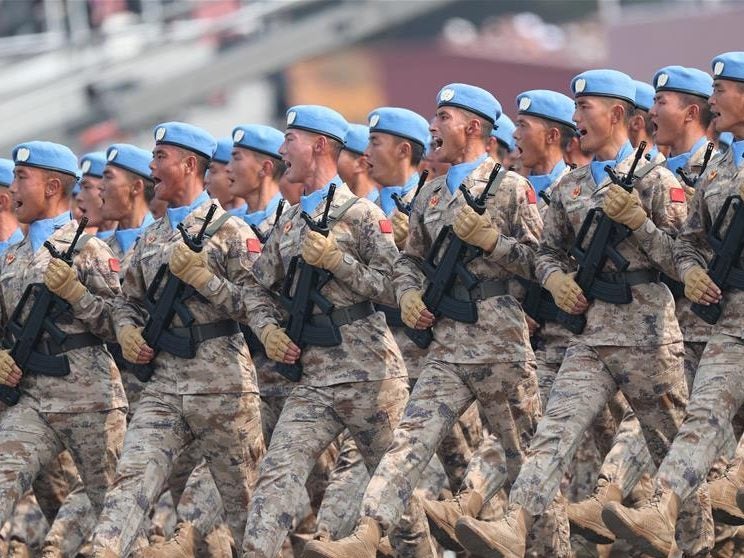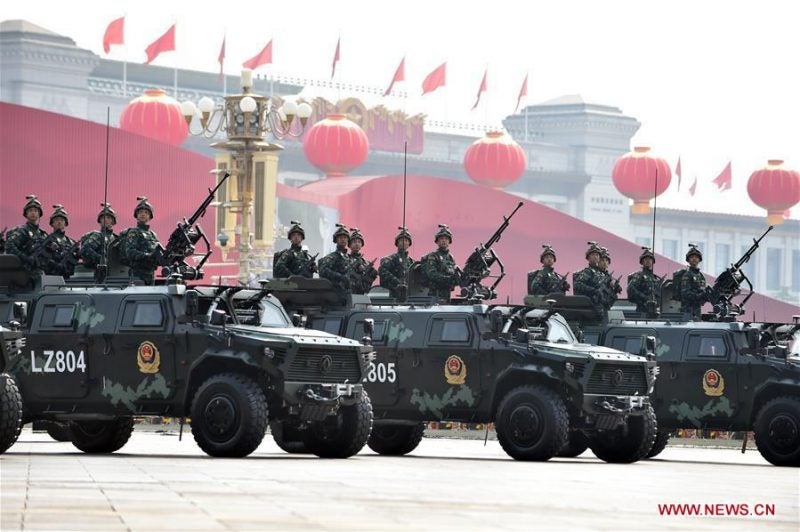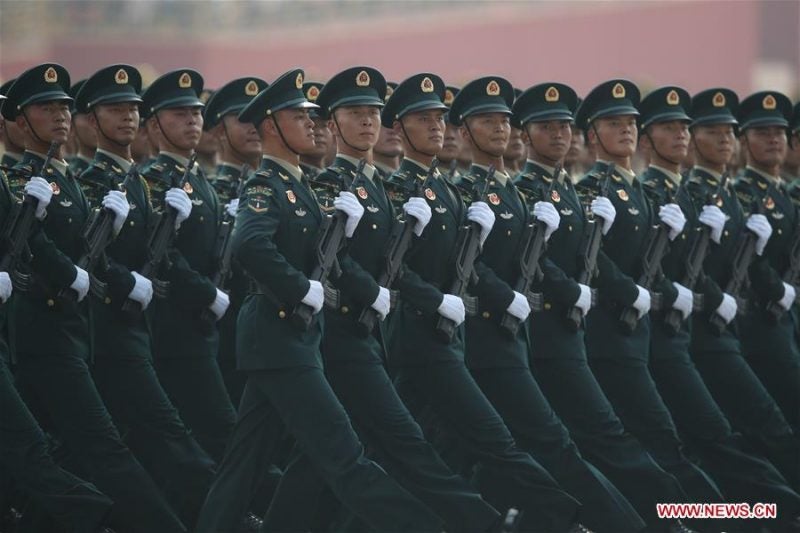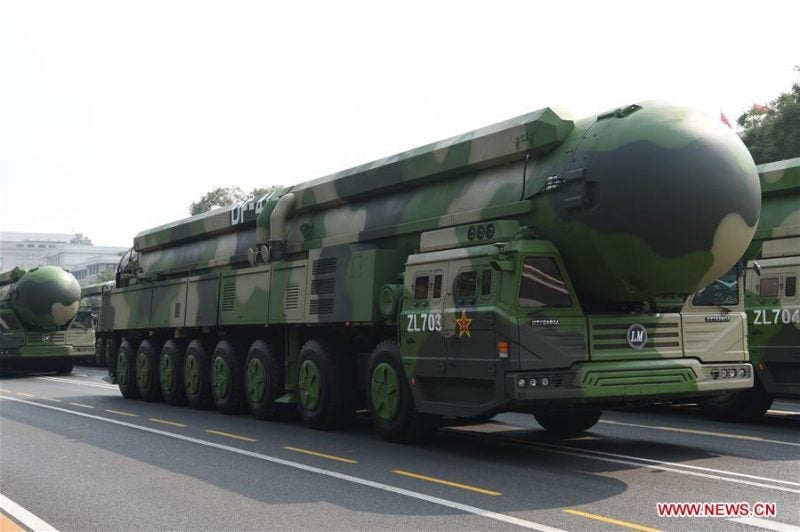
The eyes of the world today turned to Beijing and the People’s Republic of China to witness thousands of Chinese troops take to the streets. A spokesperson for the People’s Liberation Army before today’s parade insisted it was not about “flexing muscles” but rather, as reported in the Chinese press, an opportunity to showcase home-grown military technology.
The massive parade saw around 15,000 personnel with 580 pieces of equipment march through Beijing as 160 aircraft flew overhead. Part of the contingent of troops included members of China’s 8,000 strong UN Peacekeeping force for the first time.
Foreign militaries and the press watched closely during the 80-minute parade, which showcased equipment ‘already in service’ as China publicly marked the capabilities of People’s Liberation Army. In total the Chinese Government invited 188 members of militaries from 97 countries this year.
The vast display is a far cry from the first parade held at the founding of the People’s Republic, where aircraft were directed to sortie twice over the capital to make it look like China had more airpower.
Before this year’s event, the South China Morning Post reported that a key pillar of the event would be to showcase the modernisations and reforms of People’s Liberation Army brought about by Chinese premier Xi Jinping. Jinping has pumped millions into the country’s defence budget to cover modernisation efforts across all branches of the military.

Some of the modern equipment on display included the country’s newest stealth fighter, the J-20, alongside its main fighter aircraft, the J-10 and J-11. The display also saw Y-20 transport aircraft and Z-10 helicopters taking to the skies.
The J-20 stealth fighter jet has seen some public sorties in recent years, and when it entered commission was the third fifth-generation stealth fighter jet to be developed after the F-35 and F-22. Development of the J-20 was mired by controversy when, in 2009, the Wall Street Journal reported that stolen F-35 technology was used to help develop the fighter jet.
At a press conference before the show, a Chinese military spokesperson said the parade would “fully demonstrate our capabilities of joint operation, joint training and joint support under the new leadership and command system”.

On the land front, Chinese Army showcased an array of missiles including nuclear weapons, which have long been a mainstay of the parade. The showing of an in-development DF-17, capable of carrying a hypersonic glide vehicle, highlighted the country’s missile capability.
Chinese Army also showcased the non-silo based Dongfeng-41 (DF-41) intercontinental ballistic missile. The DF-41, according to Chinese state media, can target and attack anywhere in the world and can house 10 separate warheads using re-entry vehicles that can all be targeted independently to strike numerous locations.

According to the Centre for Strategic and International Studies the weapon has a potential range of up to 15,000km; that’s 2000km further than the US minuteman system.
A total of 16 missile launchers took part in the parade, with China’s Ministry of National Defence saying the missile will “play a vital role in strategic counterbalance, deterrent control and in winning decisive victory”.
China also showed off its unmanned potential, revealing the DR-8 surveillance drone and an unmanned combat aerial vehicle called the ‘sharp sword’, which is designed to be launched from aircraft carriers to strike far away from China without putting pilots or expensive fighter aircraft in danger.



